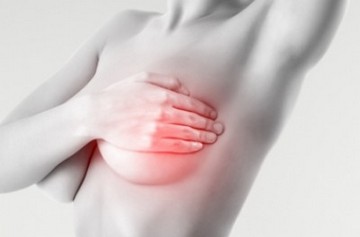Mastitis During Pregnancy

Contents:
- Mastitis Symptoms
- Mastitis Types
- Causes Mastitis in Pregnancy
- Mastitis Exams and Tests
- Treatment Mastitis in Pregnancy
- Complications
- Mastitis Prevention
Mastitis in Pregnancy
Mastitis is an infection of the breast tissue that is very common in lactating women due to incorrect breastfeeding technique. A cracked nipple or an external negative action affecting the nipples can also cause mastitis. Thus, mastitis is not rare during pregnancy.
Mastitis Symptoms
- overall health problems (fever, body temperature rise, weakness, head ache);
- breast pain;
- breast swelling;
- breast redness;
- a hard lump that is painful to touch/
Mastitis Types
There are four common forms of mastitis: lactational (puerperal) mastitis, serous mastitis, infiltrative mastitis and suppuratives mastitis. All forms of mastitis are its consecutive stages that happen one after another if not treated properly.
Puerperal mastitis develops in lactating women due to engorgement.
- Serous mastitis (germs penetrate the breast tissue and multiply rapidly causing inflammation);
- Infiltrative mastitis is when inflamed areas make one and lead to breast swelling;
- Suppurative mastitis (purulent infiltration)/
Non-lactating women have the same forms of mastitis, except for puerperal mastitis.
Causes
Mastitis is an infection process, which is triggered by different germs and fungus entering the breast.
Major mastitis-causing pathogens are:
- staphylococcus aureus;
- streptococcus agalactiae;
- coliform bacterium;
- mycobacterium tuberculosis.
Bacteria may enter the breast through the milk ducts, through the cracks and sores in the nipple, or with the blood and lymphatic fluids from other pockets of infection (during tonsillitis, lymph glands, or septic wounds).
Mastitis Exams and Tests
- Medical history and complaints analysis (how long ago the pain started? Does the pain increase when pressing the inflamed area or breastfeeding?).
- Past medical history analysis (illnesses, infections, surgeries, injuries, supercooling etc.).
- Obstetric history analysis (previous gynaecological disorders, pregnancies and pregnancy terminations, problems etc.).
- General examination (checking temperature, blood pressure, pulse, respiratory rate, cardiac sound, listening to the lungs, checking pharyngeal mucosa, and lymph nodes) and breast examination (shape, skin colour, thickness, nipple discharge, breast distortion etc.).
- Blood tests are taken to detect the inflammation (erythrocyte sedimentation rate, leukocytes (white blood cells) increase etc.).
- Microbiological study of the nipple discharge helps to identify the infecting agent and its tolerance to antibiotics.
- Breast ultrasound helps to locate the inflamed area and mastitis form.
- Mammologist and surgeon consultation (in some cases)
Treatment Mastitis in Pregnancy

- An obstetrician-gynaecologist examination is required prior to treating mastitis.
- Antibiotic treatment (to fight the infection).
- Anti flammatory medications and painkillers treatment to relieve swelling, pains and temperature rise.
- Surgical treatment (penetrate a localized pocket of pus, perform a surgical drainage, chemical irrigation with antiseptics).
- Seeking medical help promptly guarantees good prognosis.
Complications
Suppurative mastitis is the most dangerous among other forms of mastitis.
It can lead to such complications as:
- destruction of the mammary glands;
- breast deformity (size and shape change, cosmetic disfigurement);
- losing ability to breastfeed in future (due to losing the mammary gland tissue that produces milk);
- extension of purulent infection to other tissues (muscles, adipose tissue, i.e. purulent infections of soft tissues like breast erysipelas, phlegmon and gangrene);
- sepsis (a life-threatening condition that is caused by germs and pus entering the blood).
Mastitis Prevention
- Visit your obstetrician-gynaecologist regularly (1 visit per month during the 1st trimester, 1 visit per 2-3 weeks during the 2nd trimester, and 1 visit per 7-10 days during the 3rd trimester).
- Registration with women’s consultation clinic as early as possible (within first twelve weeks of pregnancy).
- Personal hygiene.
- Seek medical advice immediately if pain or a lump in the breast detected.
- Avoid supercooling.
- Prompt treatment of infections.
Video: Signs and Symptoms of Mastitis